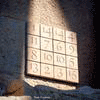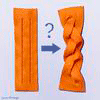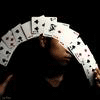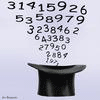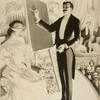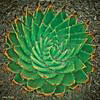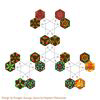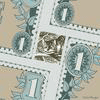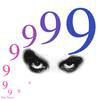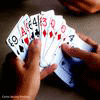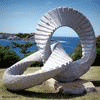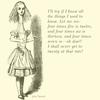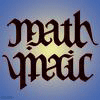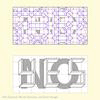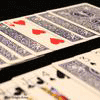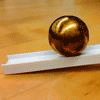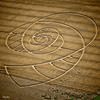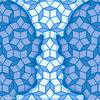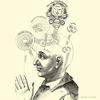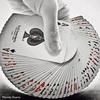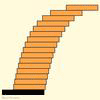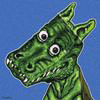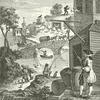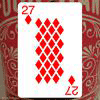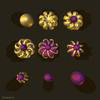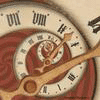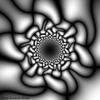Mathematics Awareness Month 2014: Mathematics, Magic, and Mystery
Navigate the Calendar
Knot Possible
Here is a knotty mystery from computer scientist and sculptor George Hart. The first video poses the problem, and the second gives the answer.
The videos above are courtesy of the Simons Foundation, part of the Mathematical Impressions series.
Taking it Further
Try cutting a bagel into a knot. There is more than one way to do it! George Hart explains here. It is also possible to cut a bagel into two linked halves, so it looks like two links in a chain. Give that a try, or watch the video below to see how it’s done:
And why should you settle for a bagel with only two linked halves? How about three, four, five, or six linked pieces? Can you describe a way to accomplish that? The one and only Professor Carlo Séquin will be happy to explain:
Here’s another fun challenge: Suppose that you tape two Möbius strips together. Can you then make a single cut to form two linked hearts? It makes a delightfully geeky Valentine’s Day present!
The Underlying Mathematics
These problems come from a branch of mathematics called (appropriately enough) knot theory, itself a branch of topology. Despite the simple nature of the objects of study in knot theory (circles embedded in three-dimensional space), the field is notoriously difficult.
An excellent starting point for readers new to the subject is Martin Gardner’s book Knotted Doughnuts and Other Mathematical Entertainments (W.H. Freeman, 1986). The book is also included on the CD compilation Martin Gardner’s Mathematical Games: The Entire Collection of His Scientific American Columns on one CD (MAA, 2008). See chapter 5, “Doughnuts: Linked and Knotted.”
A more formal introduction to knot theory is Colin Adams’ The Knot Book: An Elementary Introduction to the Mathematical Theory of Knots (American Mathematical Society, 2004).
And while we’re at it, a delightful way to tie up any loose ends is to explore Burkard Polster’s The Shoelace Book: A Mathematical Guide to the Best (and Worst) Ways to Lace Your Shoes (American Mathematical Society, 2006).



